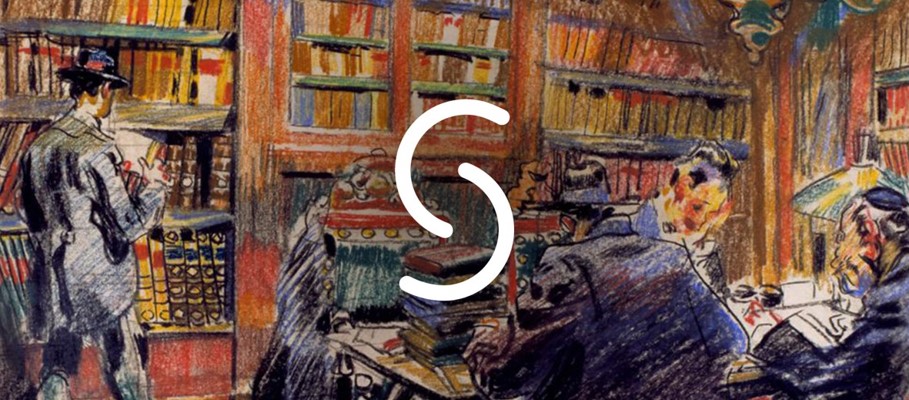Cotton manuscripts
Item
-
Country
-
GB
-
Language of name of institution
-
eng
-
Contact information: postal address
-
96 Euston Road, London NW1 2DB
-
Contact information: phone number
-
0044 (0)1937 546060 (Customer Services)
-
Contact information: email
-
mss@bl.uk
-
Reference number
-
Cotton MSS
-
Type of reference number
-
Archival reference number
-
Title (official language of the state)
-
Cotton manuscripts
-
Language of title
-
ara
-
deu
-
dut
-
eng
-
fra
-
gre
-
heb
-
ita
-
lat
-
por
-
rus
-
spa
-
Creator / accumulator
-
Robert Bruce Cotton
-
Date note
-
4th century/17th century
-
Language(s)
-
eng
-
Extent
-
c. 1,400 manuscripts, and c. 1,500 charters, rolls, and seals
-
Type of material
-
Cartographic Material
-
Graphic Material
-
Textual Material
-
Scope and content
-
The Cotton manuscripts collection comprises the largest group of Anglo-Saxon manuscripts in the world, including Biblical manuscripts, Medieval cartularies from England and Ireland, a series of maps, heraldic manuscripts, and 16th- and 17th-century state papers.
It is part of this miscellaneous collection a volume containing records and papers concerning England and France from the early 17th century (Cotton MS Caligula E X), which includes a report with the information given by a French agent about the emigration of Portuguese and Spanish conversos to France. He states that most of them fled from the persecution of the Inquisition and settled in cities in the Gascony district, especially Bayonne. He refers to them as "marrannes" (Marranos), who were publicly Christians and held Jewish ceremonies in private.
-
Archival history
-
Robert Cotton formed his personal collection by acquiring manuscripts from, among others, the antiquarian scholar John Leland (d. 1552), the mathematician and astronomer John Dee (d. 1609), and the statesman William Cecil, Baron Burghley (d. 1598). He allowed some of his contemporaries to use his library and loaned manuscripts to his friends, some of which were never returned. It is the case of the Utrecht Psalter, now in Utrecht University Library, which was alienated from his library in the 1620s. In 1602-3, Cotton also gave approximately a dozen volumes to Sir Thomas Bodley (d. 1613), the first major donation of manuscripts to the Bodleian Library at Oxford.
The Cotton library was inherited and augmented by his son, Thomas Cotton (1594–1662), and grandson, John Cotton (1621–1702). John negotiated the transfer of the collection to the nation at his death, as confirmed in 1701 by Act of Parliament. This was the first time the British nation became responsible for a collection of books or manuscripts, an important stage towards creating a national, public library.
On October 23, 1731, a few volumes of the Cotton collection were destroyed and others damaged in the sequence of a fire at Ashburnham House, Westminster, where they were temporarily stored. A programme of restoration was carried out at the British Museum in the 19th century, under the direction of Frederic Madden (d. 1873), Keeper of Manuscripts, making the damaged items once again available for public consultation.
In 1753, the Cotton library formed one of the foundation collections of the newly-established British Museum. Sir John Cotton is therefore regarded as the first benefactor of the British Museum (and hence of the British Library).
-
(source: Cotton manuscripts)
-
Administrative / Biographical history
-
Robert Cotton (1571-1631) was born at Denton, Huntingdonshire. He was educated at Westminster School and Jesus College, Cambridge. He started to acquire manuscripts and other antiquities by the age of 18, and built up an impressive collection which also included printed books, Roman inscriptions and medieval coins. The printed books are now dispersed, but many of the coins remain at the British Museum, and the inscriptions at the Cambridge University Museum of Archaeology and Anthropology. Cotton was elected to Parliament on numerous occasions, and was an advisor to King James I of England and VI of Scotland. He was also one of the early members of the Elizabethan Society of Antiquaries. Sir Robert Cotton died at Westminster on May 6, 1631, and was buried at his family estate of Conington, Huntingdonshire.
-
(source: Cotton manuscripts)
-
System of arrangement
-
In Cotton's original library, the manuscripts were housed in presses surmounted by busts of the Twelve Caesars and two Imperial Ladies. They retain this sequence in the catalogue: Cotton MSS Julius A I to F XI; Cotton MSS Augustus I to VII; Cotton MSS Tiberius A I to E XI; Cotton MSS Caligula A I to E XIII; Cotton MSS Claudius A I to E VIII; Cotton MSS Nero A I to E VIII; Cotton MSS Galba A I to E XIV; Cotton MSS Otho A I to E XIV; Cotton MSS Vitellius A I to F XIX; Cotton MSS Vespasian A I to F XVII; Cotton MSS Titus A I to F XIV; Cotton MSS Domitian A I to A XVIII; Cotton MSS Cleopatra A I to F VII; Cotton MSS Faustina A I to F X; Cotton MSS Appendix I to LXV; Cotton MS Fragments I to XXXII; Cotton Charters I 1 to XXX 41.
-
Author of the description
-
Kevin Soares and Carla Vieira, 2022
Linked resources
Items with "Collections (official language of the state): Cotton manuscripts"
| Title |
Class |
| British Library |
|
